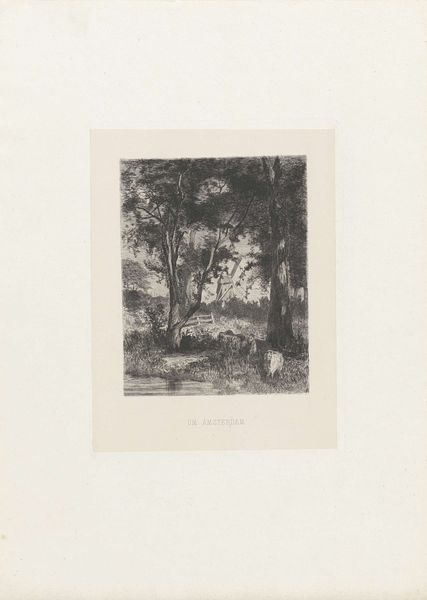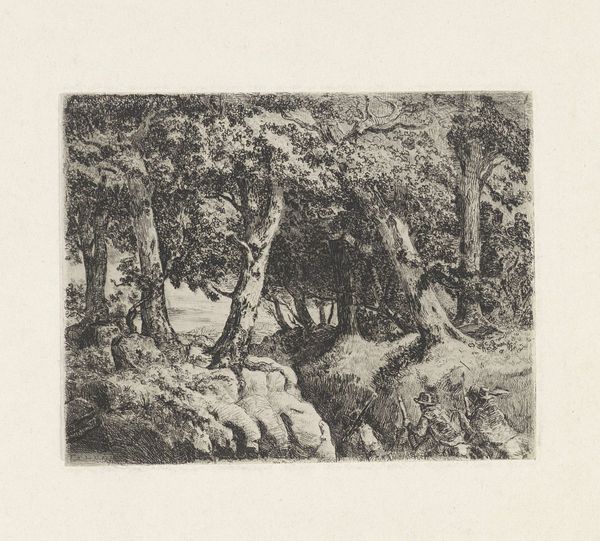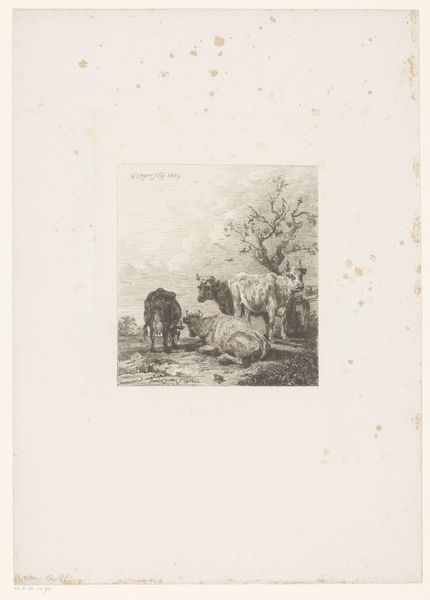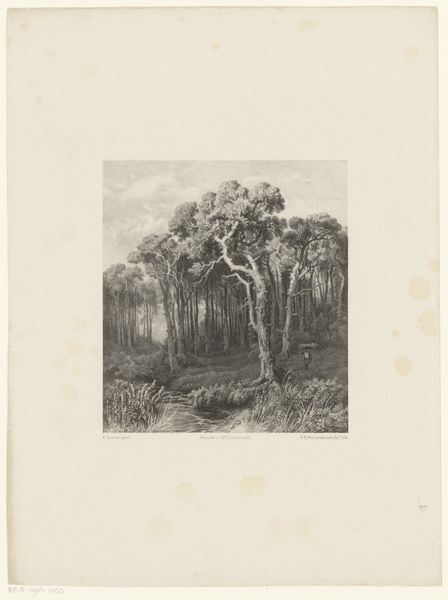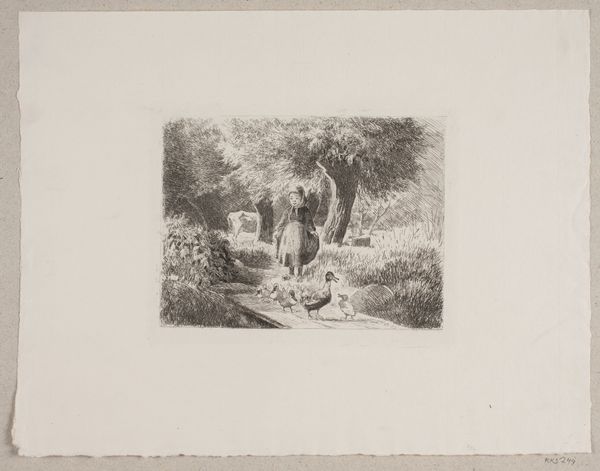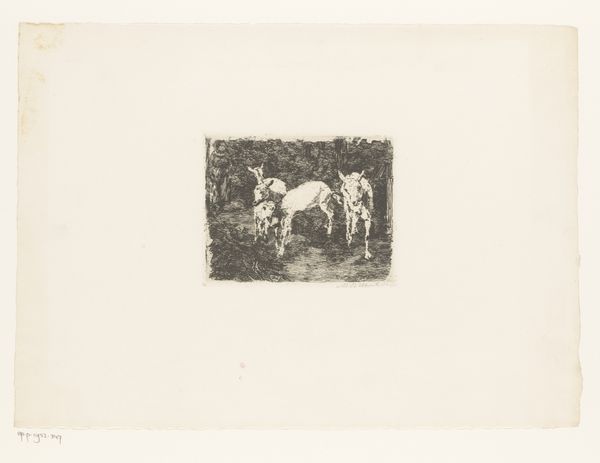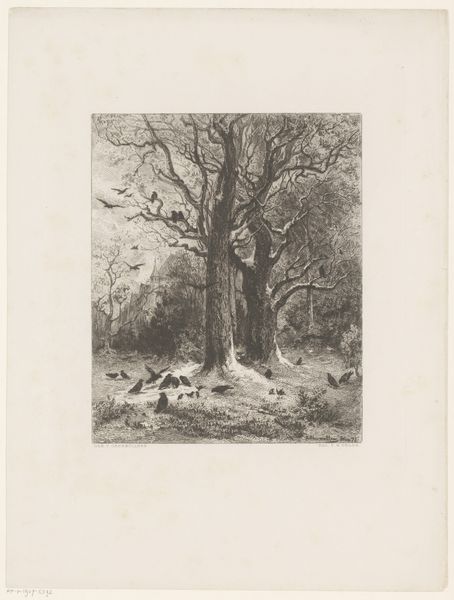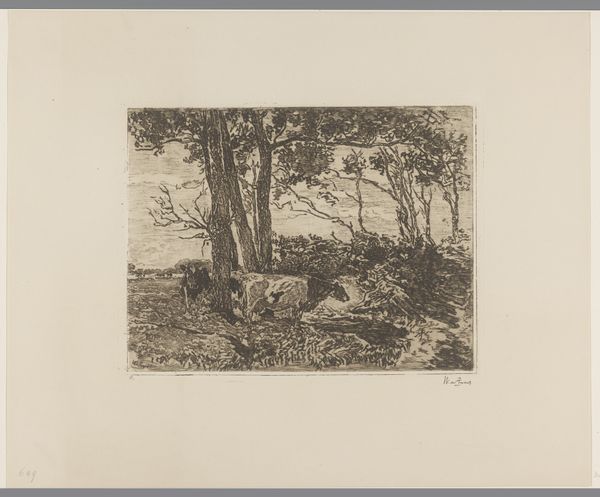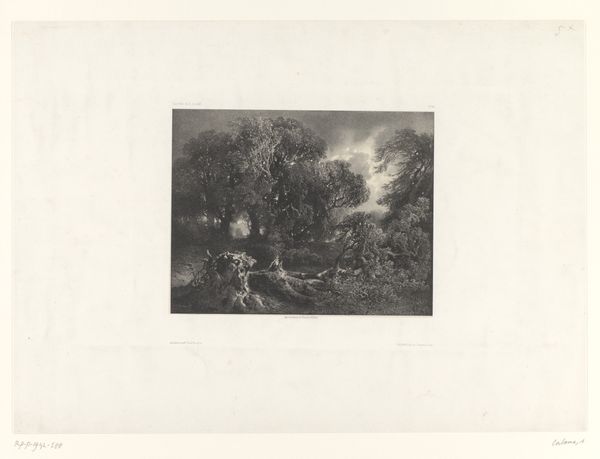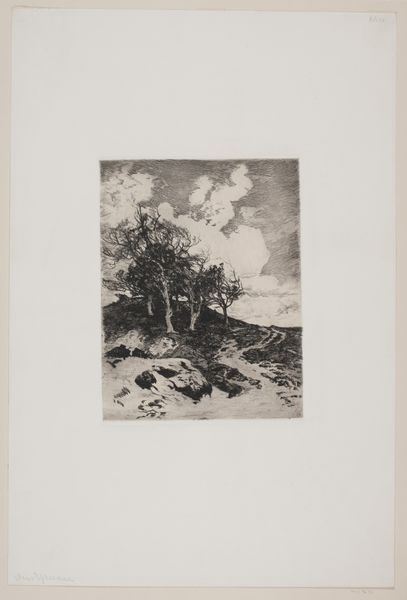
drawing, print, etching, paper
#
drawing
#
light pencil work
# print
#
etching
#
landscape
#
figuration
#
paper
#
france
#
genre-painting
Dimensions: 211 × 162 mm (image); 217 × 168 mm (plate); 443 × 332 mm (sheet)
Copyright: Public Domain
Editor: Charles Jacque's etching, "Cowherd," really caught my eye. It's like a window into a serene, pastoral world. The muted tones and the figures nestled within the trees give off this feeling of quiet harmony. What's your take on it? What do you see in this piece? Curator: I see a carefully constructed scene, idealized but speaking to larger themes. Consider the context: mid-19th century France. There was a rising middle class with an interest in Romanticized rural life. Prints like these offered access to that imagery, reinforcing certain notions of class and labor. Who is invited into this serene landscape and who is conspicuously absent? Editor: That’s interesting. So, the tranquility might be masking something about the social realities of the time? I hadn't thought about it that way. Curator: Precisely. Notice the shepherd seems at peace, almost picturesque. This idealized vision ignores the labor, potential poverty, and precariousness associated with rural life at that time. Do you think Jacque intended to deceive, or rather perpetuate an idealized view? How do such portrayals shape our understanding of history and the role of labour within it? Editor: I'm not sure if it was intentional, but that’s a great point about the role of these images. Perhaps by considering such prints through this lens, we can look for counter-narratives, images that depict rural life in a less romantic light? Curator: Exactly! It's about engaging critically with the visual language and unpicking those layers of representation. Ultimately, art should challenge us to question. Editor: This makes me see it completely differently. Thanks! Curator: It's a process, isn't it? We're both continually learning and unlearning, reshaping perspectives.
Comments
No comments
Be the first to comment and join the conversation on the ultimate creative platform.
